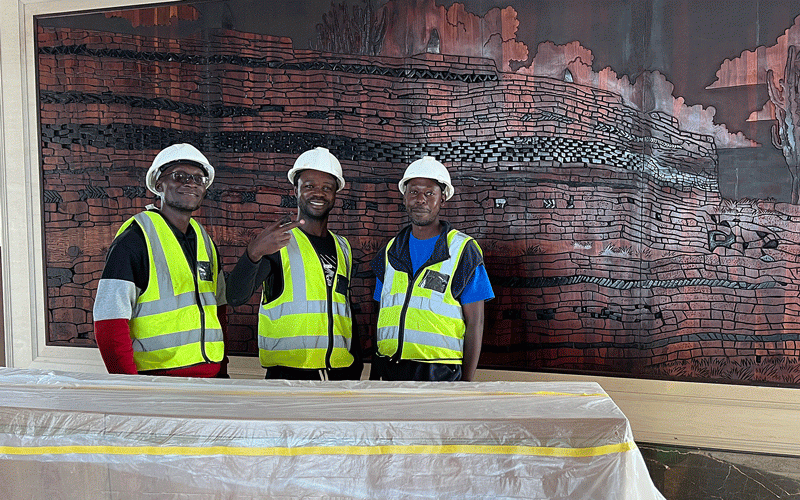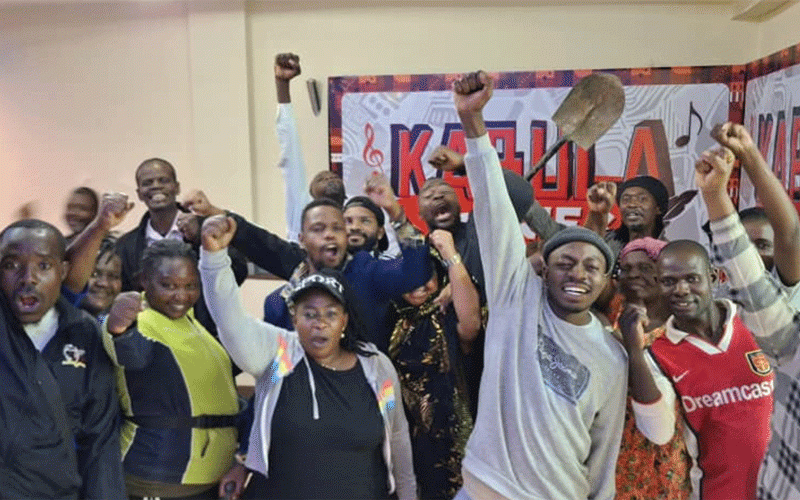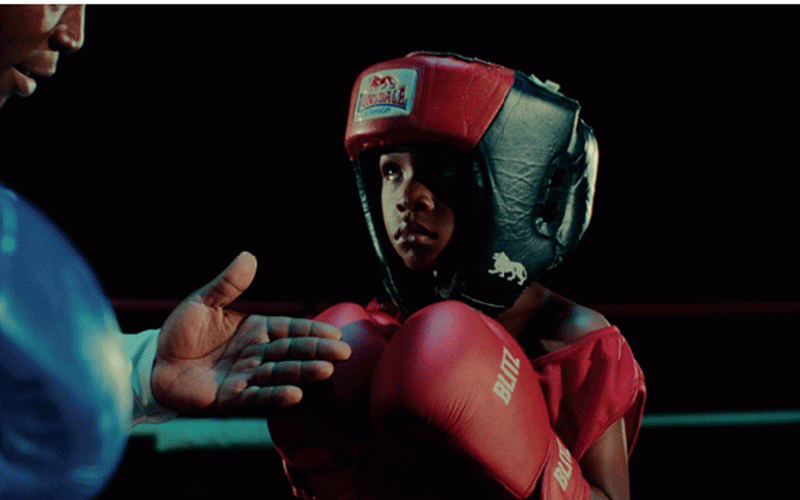
ZIMBABWE hosts the 44th Ordinary Summit of Sadc Heads of State and Government today at the New Parliament Building in Mt Hampden.
Aside from the political agenda, the international affair provides an opportunity for the country to showcase its imposing US$200 million venue.
The event is also an opportunity for the Zimbabwean artists with artworks displayed in the august House to shine.
Located 20km from Harare along Old Mazowe Road, the New Parliament Building was built by the China’s State-owned Shanghai Construction Group, and funded by the giant Asian country through a grant.
Originally intended for the Kopje area in Harare, the idea was conceptualised in 1983 and contracts for the project were signed in 2014 by the late former President Robert Mugabe in China.
His successor President Emmerson Mnangagwa broke ground for the project on November 30, 2018, which after delays due to outbreak of the COVID-19 pandemic, construction was completed in five years and officially handed over on October 27, 2023.
The building was designed by China SIPPR Engineering Group, a subsidiary of China National Machinery Industry Corporation (SINOMACH).
It follows indigenous design elements in a Brutalist architectural style.
- Mr President, you missed the opportunity to be the veritable voice of conscience
- ED to commission new-look border post
- Zanu PF ready for congress
- Zanu PF ready for congress
Keep Reading
Inspired by Great Zimbabwe, the structure mirrors the ancient monument’s concentric lines while simulating the enclosures, replicating its conical pillars, and appropriating the use of chevron patterns.
It has been lauded and promoted as a reflection of “. . . the enduring cultural heritage, abiding values, hopes, aspirations and achievements of the Zimbabwean people”. Part of the contract for the project stipulated that the building was to be fitted and decorated, a tender was flighted by the Public Works Department through the National Museums and Monuments, and the National Gallery of Zimbabwe.
Artists were invited to apply based on their relevant skills and previous work.
National Arts Merits Awards (NAMA) winner, multidisciplinary artist and conservator Calvin Chimutuwah submitted the winning tender through Calvinart Hub (Pvt) Ltd.
It would lead to completion of four projects the Zimbabwe Birds, the Court of Arms, the ceiling mural in the House of Assembly, and the wood carving for the Presidential foyer.
Funding for the projects was provided by the constructor upon satisfactory delivery.
Expressing gratitude for the opportunity, Chimutuwah had to say: “If we (artists) are not available for art in public domain, our cultural heritage story may become silent.”
Big art projects call for collaboration.
Chimutuwah, who has been an art practitioner for more than 23 years, prudently decided to engage fellow artists as his collaborators by inviting multiple NAMA award-winning sculptor Victor Nyakauru, NAMA award-winning painter Webster Mubayirenyi, and other established artists Ronald Mutemeri, Tonley Ngwenya, Hermit Muyambo, Daniel Chimurure, Winston Nyekete, Bruce Kushata and Comfort Andrea.
Each of the artists brought special talent, unique skills, abundant ideas and added value to the final product.
Others such as Hamutendi Erick Sachiwo, Shepherd Mangenda and Cyril Mangenda were brought onto the project as skilled assistants.
Site specific projects challenge artists to improvise and innovate.
The iconic Zimbabwe Birds that stand sentinel at the location required special clearance to do the quarrying for the granite stone, and transporting the raw material involved the use of cranes.
The initial process took three weeks out of the six months it took to complete the pieces, said Chimutuwah, adding that due to the COVID-19 restrictions, the artists he was working with — Nyakauru, Nyekete, Adriano and Kushata — had to be camped on site.
Nyakauru introduced the idea to connect a water hose to the grinder, which was very helpful in accomplishing the task.
He said the idea was inspired by his experiences at a sculptor’s symposium in South Korea in 2014.
“I also learned a lot from working with seasoned stone sculptors like Nyekete, from Chitungwiza Arts Centre,” he said.
Because of the difference in carving granite against other types of stone, Nyekete would emphasise that workers put on protective clothing such as eye protection at all times.
Upon arrival at Mt Hampden, visitors will be welcomed by eight Hungwe Zimbabwe birds carved in rose brown granite rock.
Perched high up on the mountain like sentries, they gaze out to the road that approaches the Parliament.
Inversely, the Hungwe birds may seem to give a reverent benediction to guests as they leave.
The Zimbabwe Bird is an appropriation of the soapstone carving discovered at Great Zimbabwe and adopted as a national symbol, and imposed on the national flag, court of arms and local currency.
They have been described as representing Chapungu (Bateleur Eagle), which was regarded as a messenger from God, or Hungwe the (Fish Eagle), believed to be the totem of the original rulers of Great Zimbabwe.
The symbol invokes an ambiance of divine guidance, and spiritually ordained leadership, as well as the embodiment of ethnic values.
Visitors to the new Parliament will be reminded where they are by the visible mark of the national court of arms mounted at different sections of the building.
Casting of the court of arms presented a challenge because there is no foundry in the country which could cast 3,6x3,2 metres in height.
It was proposed that they be cast in China.
Chimutuwah and his team, however, worked around the problem by conceiving a successful idea to do the casting in aluminum, and in pieces that would later be assembled together for installation.
On this particular job, he worked in collaboration with Mutemeri and Chimurure.
The team surmounted different challenges when it came to the engraving of wooden sculpture for the Presidential Foyer.
Based on photographs submitted by the National Museums and Monuments, the artwork is a depiction of the Naletale Monuments located in the Midlands province.
As with all other projects, the blueprints had to be greenlighted by the Public Works ministry.
The relief is a consolidation of scenes from different landscape photographs of the ancient site.
Using indigenous Teak wood, prudence required that the panels be made in segments to reduce the risk of curving in, which could result from using a single block.
Before commencing work, the wood had to be at a specific moisture level of 7%, at which level the drying rate, is understood, would not cause damage through rapid contraction.
After being mounted, the room needed to have its temperature specially regulated to maintain the integrity of the artwork.
Naletale is one of many local examples of the material achievement of the great African civilisations.
The House of Assembly presented a different set of challenges, where the artists had to paint an extensive 90x90 square meters ceiling mural while lying down on a platform and facing upward.
The platform was on a scaffold supported by trusses that were 10 metres high, and required wearing of safety clothing such as helmets and harnesses, adding to the discomfort of the unusual working position.
As Michelangelo found out in 1508 while he painted the ceiling in the famous Sistine Chapel, it is back breaking work.
“The challenges were numerous, but the main one was working facing upwards,” Muyambo has professed.
The hard work, however, resulted in a masterpiece and near exact reproduction of scenes from rock paintings by the San (or Khoisan) people gathered to represent different provinces of the country where the sites are located.
It brings a new meaning to the expression: “The writing is on the wall”.
This challenging task was pulled off courtesy of collaboration with Muyambo, Ngwenya and Mubayirenyi who had to say: “My wish is that young people will know who did the work, why it is important and what it means.”
Referring to politicians, internationally renowned curator, writer and philosopher Simon Njami once stated that “they understand the diplomacy power of culture”.
Confronted with the works of art at Zimbabwe’s new Parliament, delegates from the 16 Sadc member States and other international guests can be expected to start conversations, and find moments of silent contemplation before and after the business of the day.










